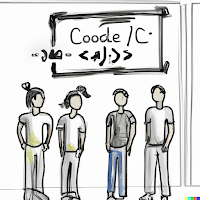The last couple posts have focused on teams, but I haven't addressed a basic question; What is a Team?
I ran cross-country in college, so I was on the team, but was it really a team? On days we had meets, it was really everyone for themselves out their on the course. Once we left the starting line, I would see little of my other teammates until we all finished the race. I could have completed without the rest of my team, and it wouldn't have had an impact on my performance. Sure, we had a coach shouting encouragement, but having a coach doesn't make us a team.
I recently came across the book Leading Teams by J. Richard Hackman. In the book, he outlines the five conditions that need to be in place for a high-performing team. Among the list is the idea that it has to be a "real" team. He defines this as meaning the team has shared responsibilities, clear boundaries, and stable membership.
I have worked with more than one team where there was no shared responsibility. Each person had their own role. User stories were assigned to the person that knew how to complete that specific type of work. When I encounter a team like this, my first inclination is to start pairing people on work. In the short run, it makes the team less productive but in the long run the team becomes more agile because each person has built additional skills and they don't get stuck because only one person can complete a certain task.
Boundaries are important because it keeps the team from being inundated with work. In Team Topologies, Skelton and Pais talk about cognitive loads. If you put to much work on a team, it diminishes their ability to deliver, just like to many things in my "doing" column causes me to suffer from task-switching.
Clearly, there has been a lot written on teams. Going back to the example I started with, my cross-country team doesn't fit into the category of a real team, but a basketball team would. If we start looking at our work teams thru the lens of Hackman, we can start seeing how we can build more effective teams.


.jpeg)